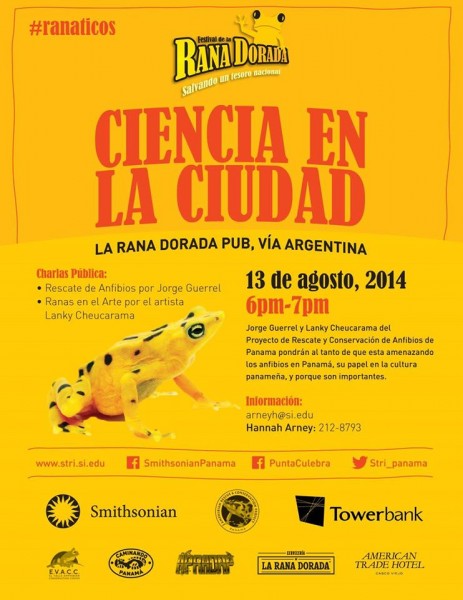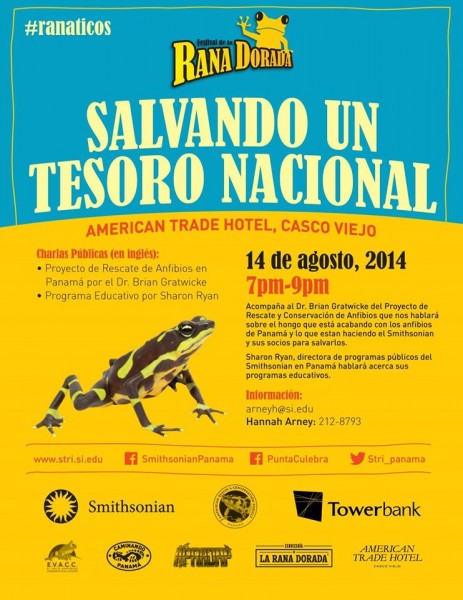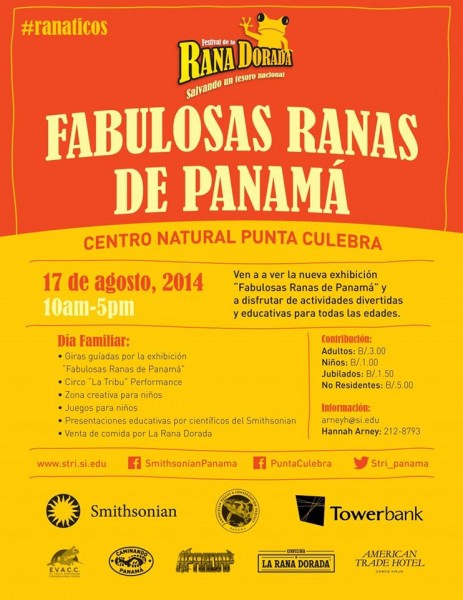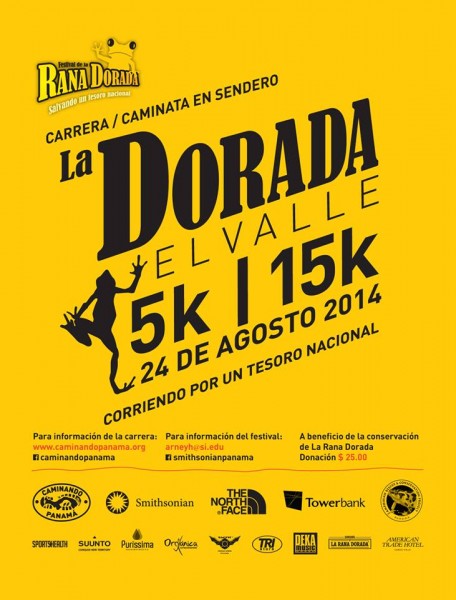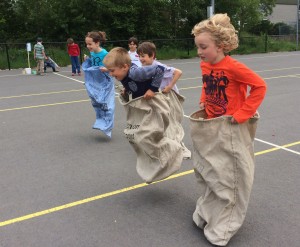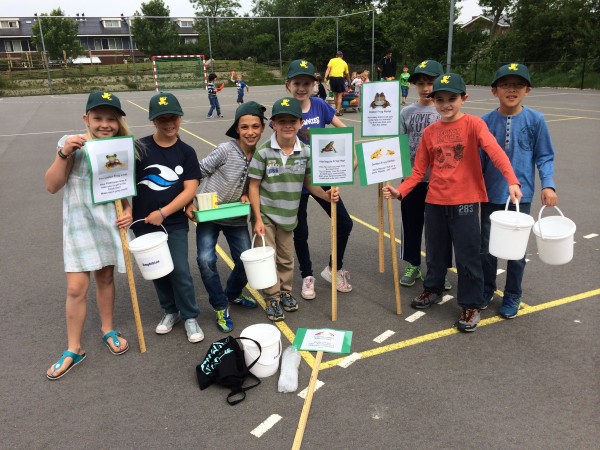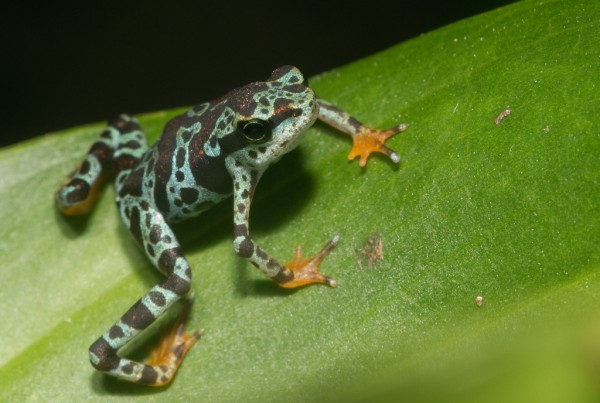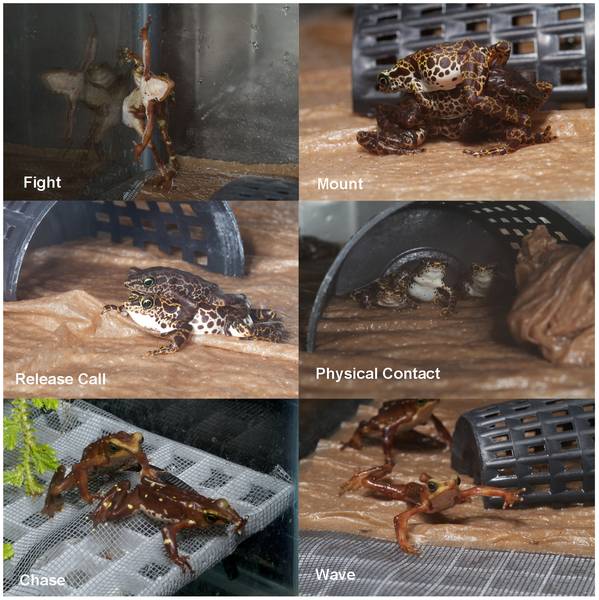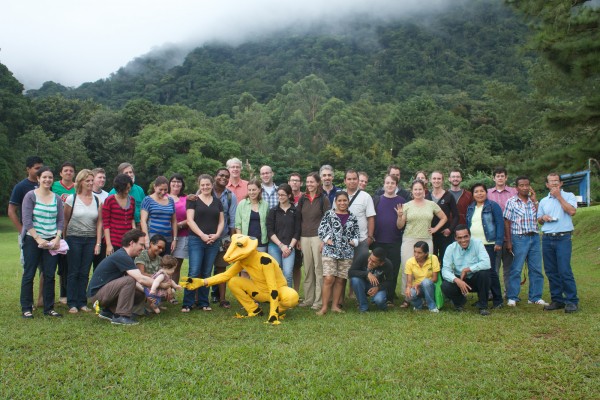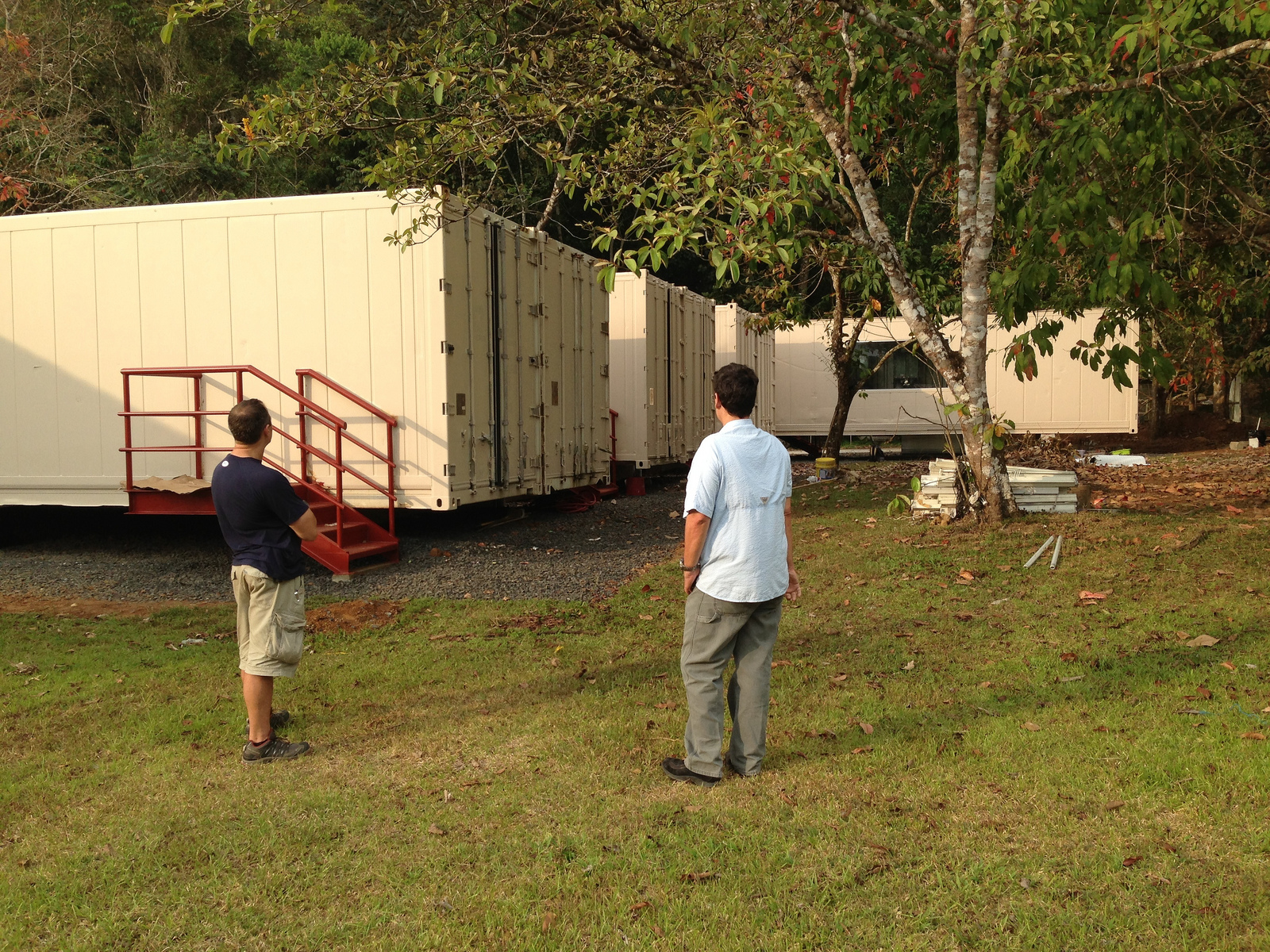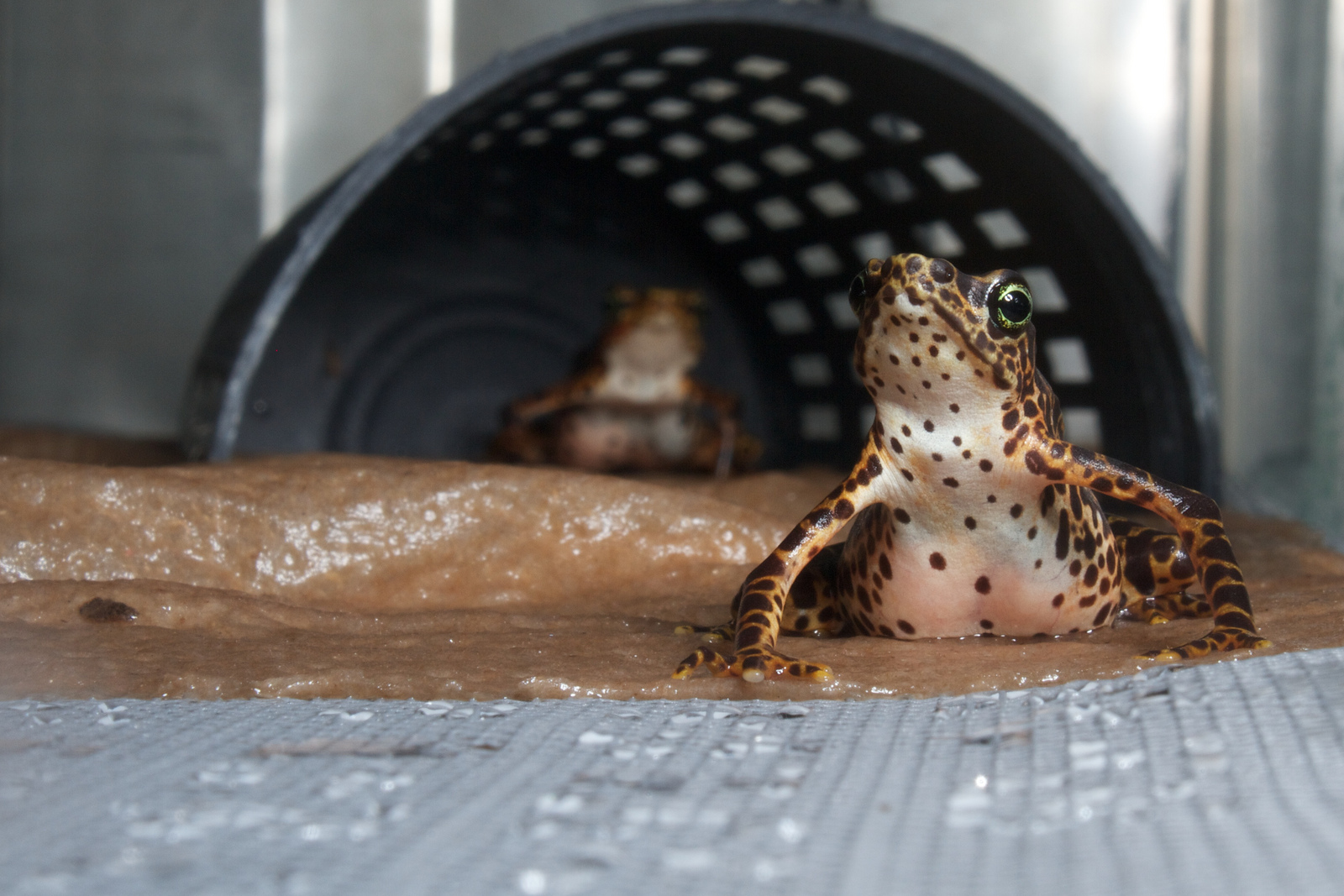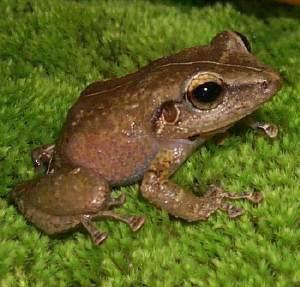 For five years, I have worked as the staff herpetologist at Las Casas de la Selva, a sustainable forestry project in Puerto Rico. I’ve also had the privilege of spending five months in Panama; some of that time was spent working with PARC and I have noticed many similarities between Puerto Rico and Panama. Specifically, I have noticed how each country has a frog as a national and cultural symbol.
For five years, I have worked as the staff herpetologist at Las Casas de la Selva, a sustainable forestry project in Puerto Rico. I’ve also had the privilege of spending five months in Panama; some of that time was spent working with PARC and I have noticed many similarities between Puerto Rico and Panama. Specifically, I have noticed how each country has a frog as a national and cultural symbol.
In Panama, everyone knows of the Golden Frog (Atelopus zeteki), and when I was studying the folklore of Panama, I heard old stories about how the frog was good luck, and that people used to believe that it turned to gold when it died. Nowadays, the Golden Frog is a symbol of Panama itself, and what it means to be Panamanian. Images of the Golden Frog adorn everything from lottery tickets to t-shirts to coffee mugs. Some of my friends in Panama have even gone so far as to get Golden Frog tattoos. And each year, thousands of people celebrate Golden Frog Day.
As an island, Puerto Rico has very few species of frogs, and 16 of the 18 native species belong to the genus Eleutherodactylus. This genus is referred to collectively as “Coquis”, although only two species make the distinctive “Ko-Kee” mating call that makes nighttime in Puerto Rico such a noisy affair. Of the 16 species of Coquis, 13 are listed by the IUCN as either Vulnerable, Endangered, or Critically Endangered. As with the Golden Frog in Panama, Coquis are a symbol of everything Puerto Rican. Mainland-born Puerto Ricans who return to the island respond to challenges about their Puerto Rican “authenticity” used to respond, “I’m as Puerto Rican as the Coqui”. Images of the Coqui show up on artistic murals, tourist kitch, and tattoos; there is even a “Coqui” brand of coffee and a “Coqui” car dealership!
But we are missing something in Puerto Rico- we have no equivalent to the “Dia de Rana Dorada”. After my time at PARC, including my opportunity in 2012 to help Angie Estrada, Jorge Guerrel, Ligo Diaz, and the rest of the staff plan and execute educational activities at the Summit Zoo, I decided to take the spirit of “Dia de Rana Dorada” back to Puerto Rico with me. The idea has been well-received, and the first “Dia del Coqui” will be a weekend-long festival from September 26th-28th, 2014. It will be held at the Jardin Botanical y Cultural William Miranda Marin in the centrally-located city of Caguas. Already, artisans, scientists, musicians, university students, historians, and public-works officials are coming together to make this event a success.
The intention of Dia del Coqui is to be a cultural celebration, but also an important learning tool to help the people of Puerto Rico know that the frogs that they have always shared the island with are in need of conservation. We hope that Dia del Coqui becomes a cultural mainstay in Puerto Rico, akin to Dia de Rana Dorada in Panama.
by Norman Greenhawk greenhawk81@gmail.com www.facebook.com/diadelcoqui



